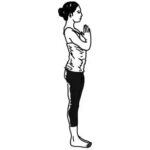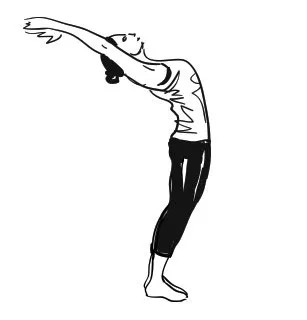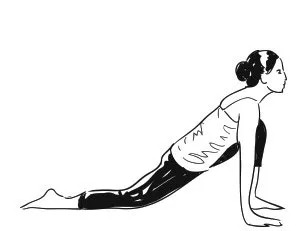Introduction
Surya Namaskara is a vital technique in yoga, offering physical, mental, and spiritual benefits. In today’s fast-paced world, more people are turning to yoga for self-improvement. However, busy lifestyles often hinder regular practice. This page emphasizes the importance of daily practice and presents Surya Namaskara as a complete sadhana, incorporating asana, pranayama, and meditation.
Modern life brings stress, leading to mental and physical health issues. Yoga, especially Surya Namaskara, provides an antidote to stress and is a powerful therapy for various ailments. Its accessibility, requiring only a few minutes daily, makes it ideal for anyone, even the busiest individuals.
yogawithcv.com is a guideline for integrating Surya Namaskara into daily routines,to experience its revitalizing effects personally. Beyond physical exercises, it includes asanas, pranayama, chakra awareness, and mantras, making it a profound spiritual practice.
The practice’s roots trace back to Vedic times, where the sun was worshipped for its spiritual symbolism. Sages initiated this daily ritual for health and social well-being.
Surya Namaskara combines form, energy, and rhythm, with twelve postures creating a physical matrix that generates prana, activating the psychic body. Its rhythmic sequence aligns with universal rhythms and biorhythms and enhancing life.
Steps to do Surya Namaskara
1

Pranamasana (Prayer Pose):
Stand at the edge of your mat with feet together. Balance weight equally on both feet and expand your chest.
Inhale and lift both arms up, palms together in front of the chest.
2
Hastauttanasana (Raised Arms Pose):
Inhale, lift your arms up and back, keeping biceps close to ears.
Stretch the whole body from heels to fingertips.

3

Hastapadasana (Standing Forward Bend):
Exhale, bend forward from the waist, keeping spine erect.
Bring hands down to the floor beside feet.
4
Ashwa Sanchalanasana (Equestrian Pose):
Inhale, push right leg back as far back as possible.
Bring right knee to the floor, look up.

5

Dandasana (Stick Pose):
Inhale, take left leg back, aligning the body in a straight line.
Keep arms perpendicular to the floor.
6
Ashtanga Namaskara (Salute with Eight Parts or Points):
Gently bring knees down, exhale, slide forward and rest chest and chin on the floor.
Raise posterior slightly; eight parts of the body should touch the floor.

7

Bhujangasana (Cobra Pose):
Inhale, slide forward and raise chest into the Cobra pose.
Keep elbows bent, shoulders away from ears, and look up.
8
Adho Mukha Svanasana (Downward Facing Dog Pose):
Exhale, lift hips and tailbone up, forming an inverted ‘V’ shape.
Try to keep heels on the ground and lift the tailbone for a deeper stretch.

9

Ashwa Sanchalanasana (Equestrian Pose):
Inhale, push right leg back as far back as possible.
Bring right knee to the floor, look up.
10
Hastapadasana (Standing Forward Bend):
Exhale, bend forward from the waist, keeping spine erect.
Bring hands down to the floor beside feet.

11

Hastauttanasana (Raised Arms Pose):
Inhale, roll the spine up, raise arms up and bend backward slightly.
Stretch up more, keeping biceps beside ears.
12
Tadasana (Mountain Pose):
Exhale, straighten the body, bring arms down.
Relax and observe sensations in the body.

Complete one set of Surya Namaskar and then repeat the steps, starting with the left foot going back in step 4 and coming forward in step 9. This completes one round of Surya Namaskar
Practice note:
Positions 1-12 constitute half a round of surya namaskara. To complete the other half the same movements are performed, the only variation being that the left leg is brought back in position 4, and the right leg is moved forward in position 9. So, one full round consists of 24 movements, two sets of 12, giving a balance to each side of the body in each half round.
When position 12 is completed, lower the hands to the side, and then commence the second half of the round.
One full round consists of 24 asanas. In an ideal situation these should be performed in a continuous unbroken flow and, except for ashtanga namaskara, each asana should change with each breath. Of course, if you tire within the round, rest after 12 postures by taking a full breath before commencing the second half. Breathe normally for a few moments if you need to. The same applies to each individual asana and between rounds.
Use the time to reorientate your awareness and posture.
Ask yourself, how do I feel? Then adjust yourself so that you are comfortable, ensuring that the breath is slow and relaxed before you go on.
Chakras - Psychic Centers
During Surya Namaskara, the practice involves focusing on psychic centers known as chakras, which are associated with nerve plexuses and endocrine glands in the body. By concentrating on these areas during the practice, we enhance our awareness and concentration. This activation of the chakras allows us to access higher psychic and spiritual energies. The physical compression of the corresponding nerve plexuses and glands in each asana stimulates and rebalances the chakras. However, the primary activation of these centers during Surya Namaskara comes from internal awareness, concentration, and visualization techniques.
Asana | Chakra | |
|---|---|---|
1 | Pranamasana | Anahata |
2 | Hasta Utthanasana | Vishuddhi |
3 | Padahastasana | Swadhisthana |
4 | Ashwa sanchalanasana | Ajna |
5 | Parvatasana | Vishuddhi |
6 | Ashtanga namaskara | Manipura |
7 | Bhujangasana | Swadhisthana |
8 | Parvatasana | Vishuddhi |
9 | Ashwa sanchalanasana | Ajna |
10 | Padahastasana | Swadhisthana |
11 | Hasta Utthanasana | Vishuddhi |
12 | Pranamasana | Anahata |

Limitations:
Surya Namaskara is suitable for all ages. Avoid over-exertion for the elderly. Not recommended for high blood pressure, heart conditions, hernia, or spinal problems without consulting a medical expert. Safe during menstruation, but avoid heavy periods. Pregnant women can start after the twelfth week and postpartum after forty days. The key is to avoid straining and gradually increase capabilities through practice. Surya Namaskara enhances awareness, health, and well-being by developing sensitivity to the body’s limits.
